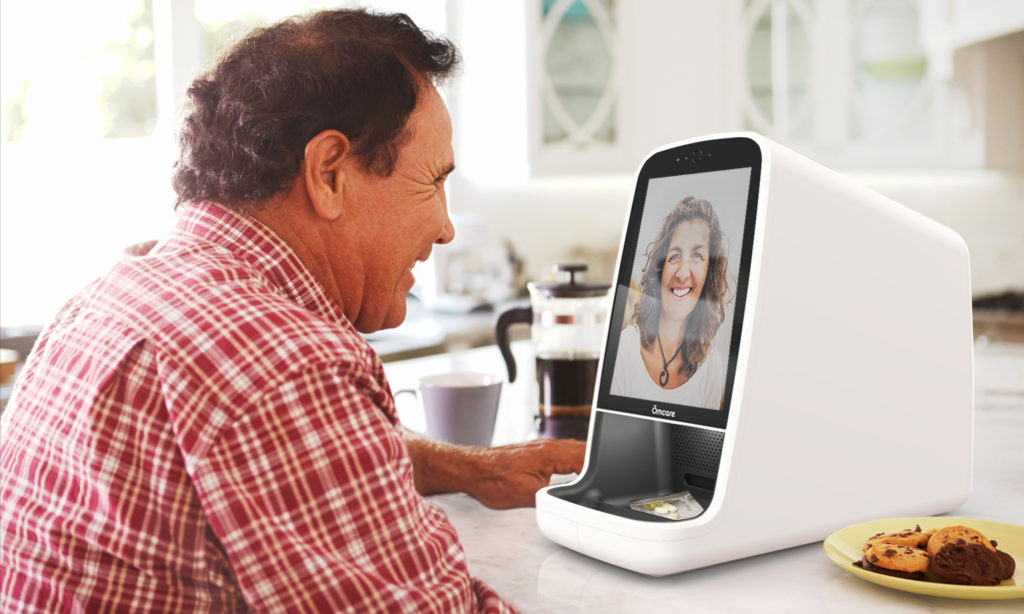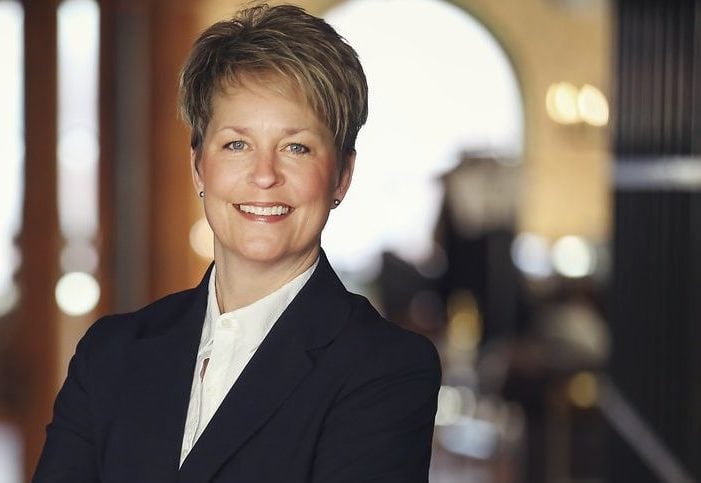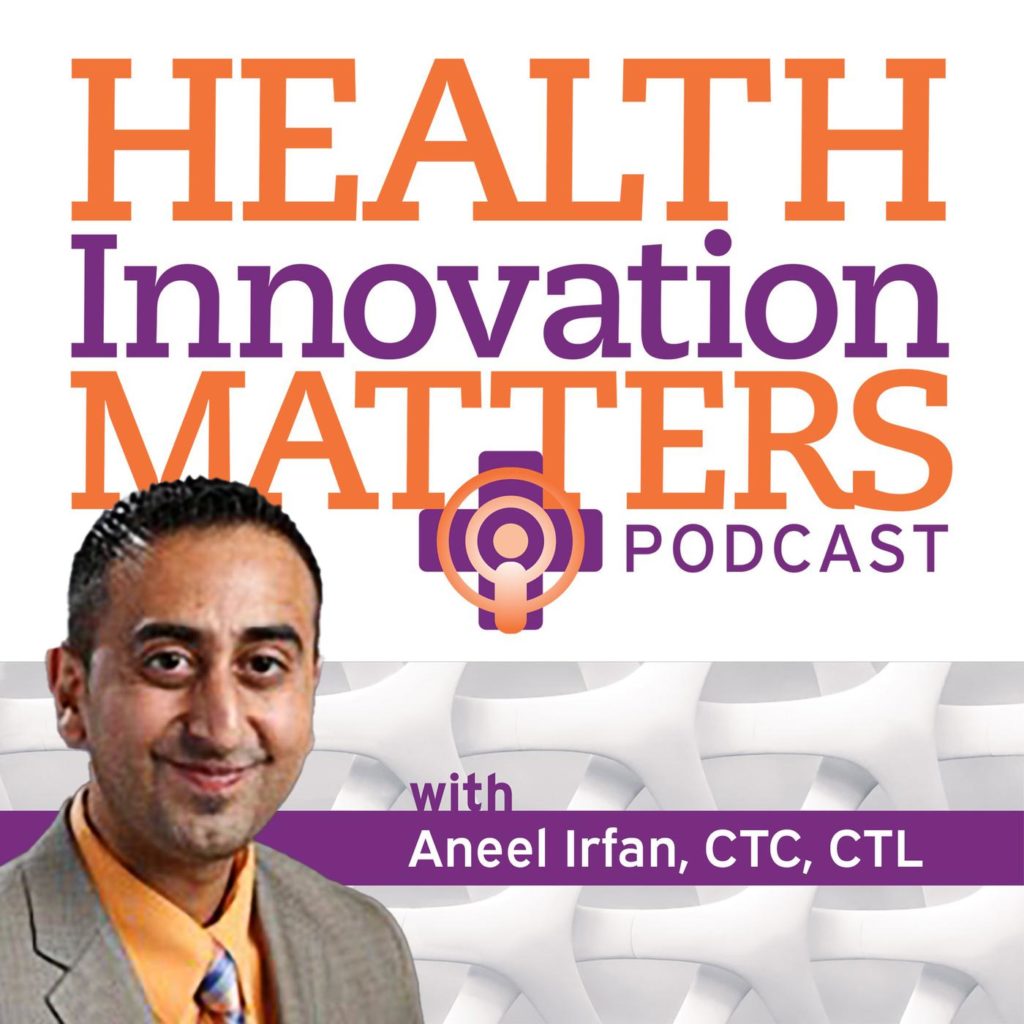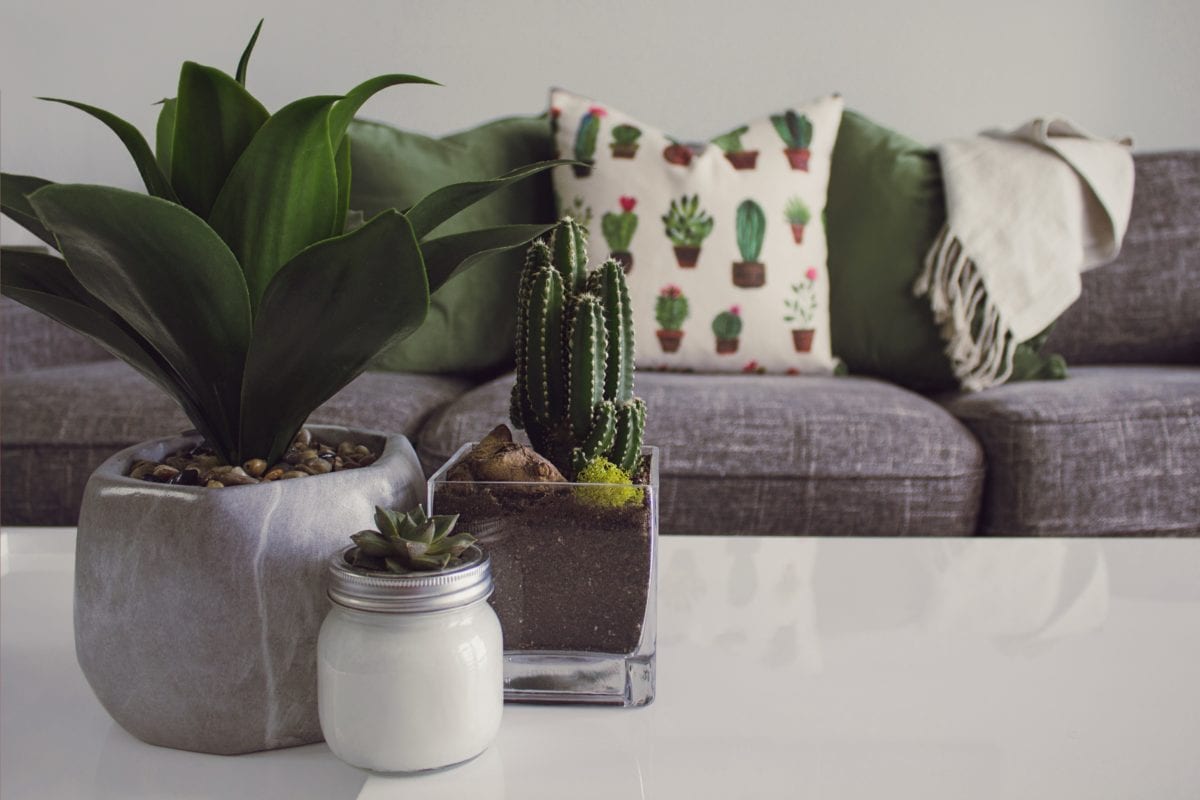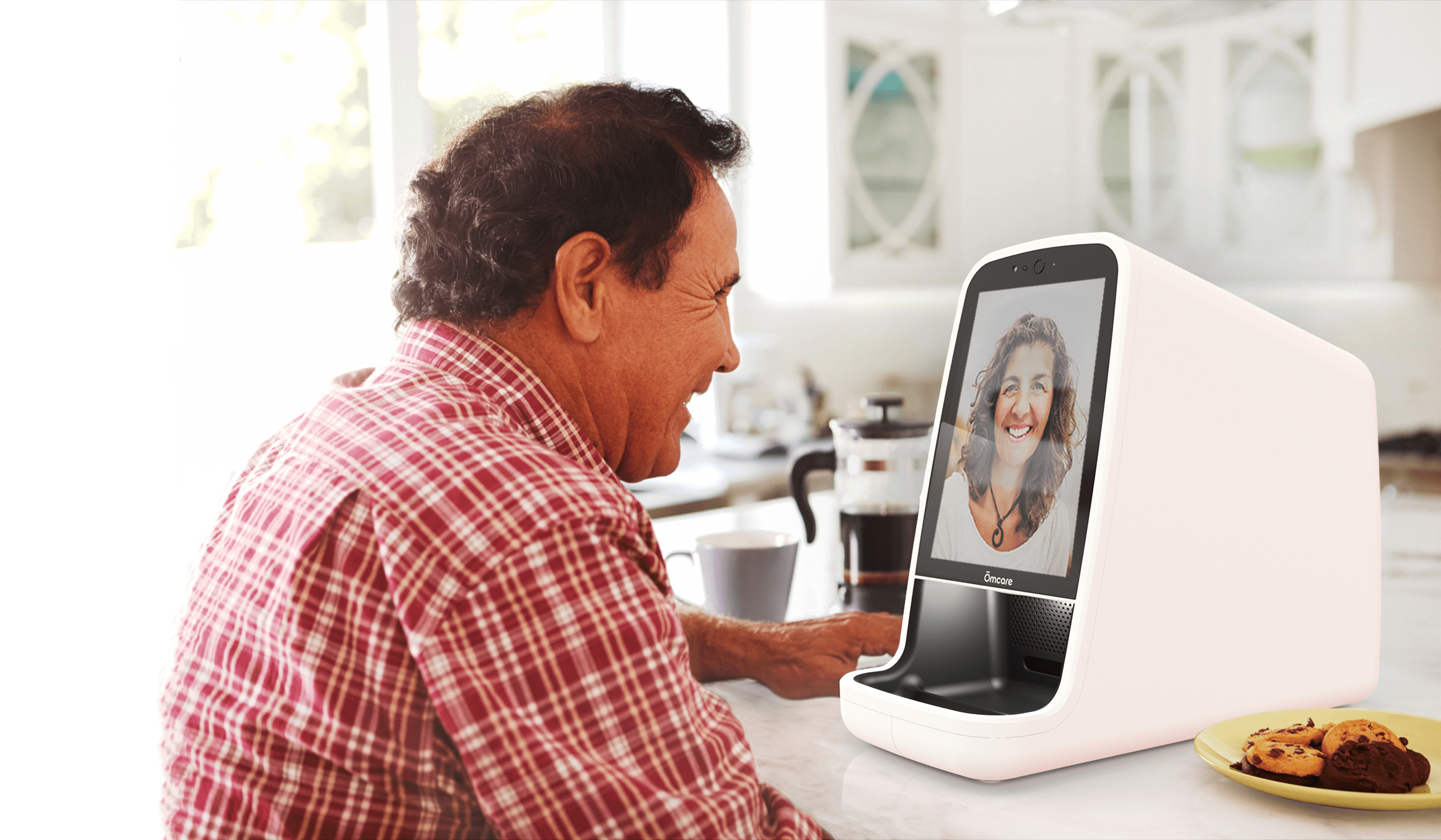6 (Effective) ways to remember to take your meds
How often do you struggle with remembering to take your medication? It's a common problem that can often feel difficult to overcome since it's all about solidifying that habit. Fortunately, some tools and devices are available to help you remember to take your meds on time. We're listing some of the most popular methods for how to remember to take your medications on time each day.
What happens when you miss a pill dose?
There are many reasons why people frequently miss doses: forgetfulness, changing schedules due to work or vacation plans, misplaced pills & pill boxes—the list goes on! The time of day you take your medication matters significantly, especially with those with chronic conditions with strong medications that could cause withdrawal symptoms or jeopardize their regimen.
Depending on all your medications, symptoms for missing doses can vary greatly. Going through your medication regimen as prescribed is highly important. If you're ever unsure what to do if you miss a dose, make sure you reach out to your healthcare provider.
6 Ways To Remember To Take Your Meds
You can use a few different methods to put reminders in place for when it's time to take your daily meds. Here is the list of some of the most popular methods:
Setting a daily reminder or alarm
Set an alarm on your phone or create calendar slots with reminder notifications. If it's too easy to hit snooze on your smartphone or you don't always have your calendar handy, you may need another method. For example, try setting an alarm and placing it next to your pill box so you'll remember to take your pill when you walk over to shut it off.
Use a manual pill dispenser
Choose the same day each week (many choose Sunday) and put all of your pills in their respective day slots in a pill organizer. That way, you can quickly and easily see whether or not you've taken that day's pills. It's a less automated way of doing things but can still help those who take multiple meds per day.
Pair the action with activities every day
Taking your medication on time becomes more attainable when it’s a habit. And most of us already have daily habits like brushing your teeth in the morning or washing your face before bed. By pairing your dose with a daily routine, remembering becomes easier each day.
Notification devices
Use a reminder device like a vibrating pill box or a smart wristwatch that vibrates to remind you to do things. These notification devices often come as complete kits with everything you need, so there's no need to worry about forgetting anything else.
Utilize health apps
Set reminders within health apps such as Medisafe Pill Reminder, Mango Health, MyTherapy, or MedMinder. These apps allow you to lookup drug information, set medication reminders and have the added benefit of tracking your own personal medication records.
Automatic pill dispensers
Automatic pill dispensers are devices with built-in schedules so you can be reminded and dispense your medication the minute it’s due. These devices have helped bridge the gap between patients, family members, and doctors who must ensure the prescription is taken as directed. For older adults remembering to take the meds can be quite difficult: these automatic pill dispensers make it easy.
How Omcare Can Help!
Ōmcare has invented the Ōmcare Home Health Hub, which includes a high-tech pill dispenser with additional easy-to-use features and the R ball. Using advanced technology, we've crafted a device that offers video support on top of automatic dispensing: no more blister packs, cumbersome refills, reminders, or last-minute calls to the pharmacist. Ōmcare's Home Health Hub takes care of everything and ensures you or your loved ones never forget to take their medication. Our Ōmcare customer care team is available 24/7 to answer any questions and provide the expert support you and your loved ones need.
Staying connected and caring during a health crisis
Information surfaces hourly about the newly classified pandemic COVID-19, and the headlines can be alarming.
The Centers for Disease Control and Prevention advises that people over 80 years of age with major illnesses have the greatest risk and should take extra precautions, such as staying in their place of residence and limiting the amount of exposure to other people, including family members and caregivers. Meanwhile, the Centers for Medicare and Medicaid Services has issued guidelines for restricting access to residents in skilled nursing facilities.
If you’re caring for an aging loved one who is either living independently or in nursing home, these guidelines can raise concerns about feelings of loneliness and isolation, as well as adherence with medication or other care plans for your loved one. Technology can play a significant role in keeping family members, patients, and care providers connected while decreasing the risk of exposure to COVID-19 or influenza – which is still a primary cause of illness, complications, and death for seniors.
3 ways technology can enable care, from anywhere during a health crisis
- Stay socially connected. Healthy adults can do their part to mitigate loneliness for the older population by introducing them to technology such as FaceTime or Skype. Take a few minutes to install the app on an iPad, tablet or smartphone, provide a bit of training, and encourage family members to connect with seniors online, in theevent that in-person visits are prohibited.
- Manage medications. A consistent care routine is the foundation of a successful, long-term care plan and is especially important when visits from a caregiver are limited. Use two-way video capabilities to remind loved ones of when to take their medications and to oversee that process. If needed, you can even dial in a clinical care provider for a three-way call.
- Conduct virtual visits. Nearly half of family caregivers travel to care for someone. If you’re worried about exposing your loved ones to COVID-19 or influenza, lean on systems like Google Nest and Amazon’s Alexa to ensure that all systems are “go” for seniors who live alone at home.
While the current situation is frightening and confusing for everyone, now is the time to use technology to unite health care providers and caregivers, and to foster communication and support that is essential to keeping everyone healthy. Our team at Ōmcare is committed to applying our expertise in video communications and remote care technology to change the way the world cares. We welcome the opportunity to share information with you about the Ōmcare Home Health HubTM and how it will enable caregivers of all types to provide support, care, and medication assistance from anywhere for older adults and people with chronic conditions.
In good health,
Lisa Lavin
Founder & CEO, Ōmcare
3 Strategies to help aging loved ones master their meds
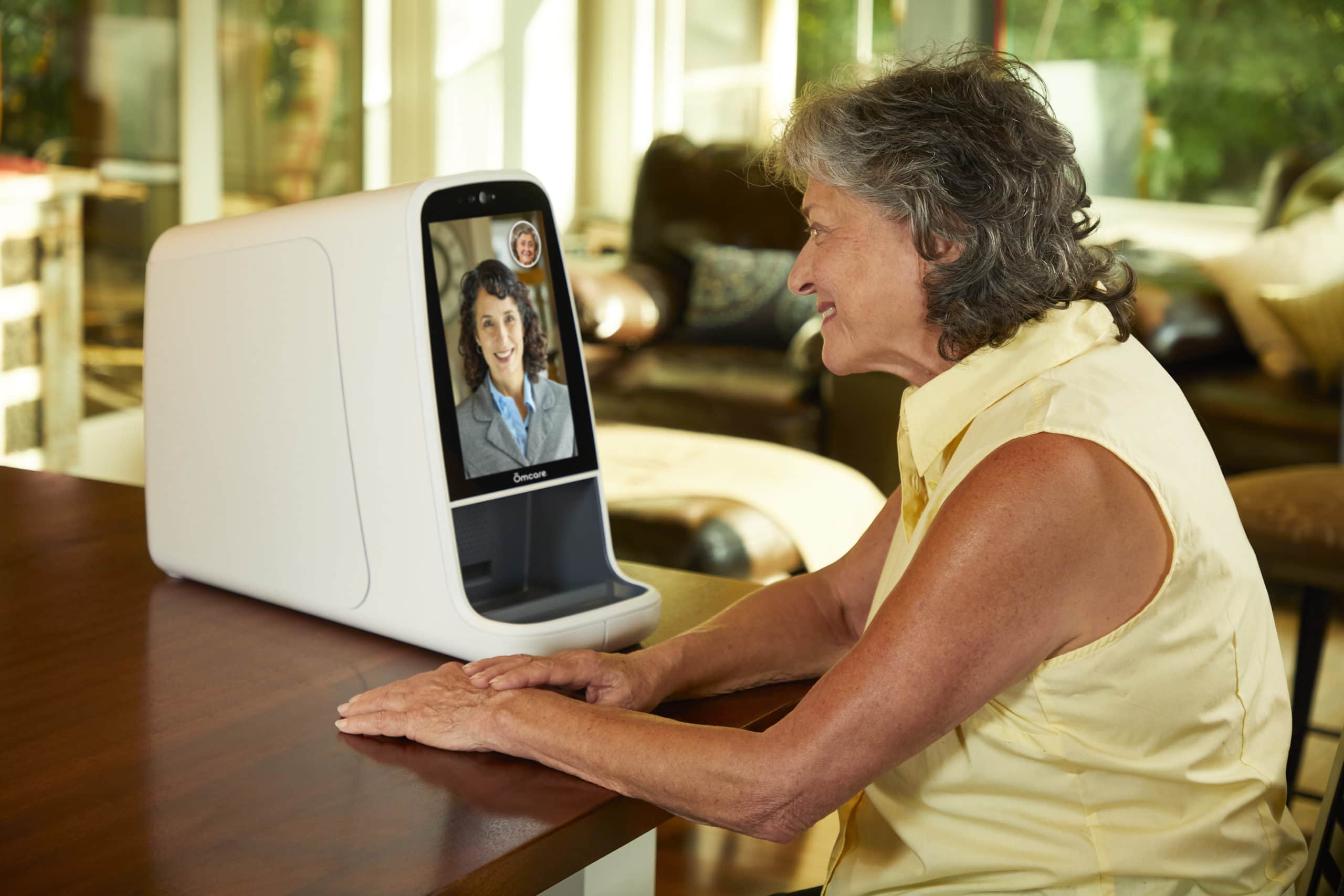
Medication non-adherence directly impacts the senior population, wherein millions of seniors depend on a home care aide or family caregiver to administer medication. Managing the dosages and schedules of multiple drugs can be a complicated, confusing, and even stressful task for caregivers. As a result, part-time family caregivers often experience anxiety related to not knowing if their loved one has taken the right medication at the right time.
If you or someone you know is a caregiver, or if you’re concerned about medication management for a loved one or family friend, here are three strategies to help ensure they take the right medication at the right time.
1. Establish a routine and method of reminders.
A consistent care routine is the foundation of a successful, long-term care plan. Following a simple, memorable routine and reminder system can help aging loved ones remember to take their medications throughout the day, even if their caregiver can’t always be there to remind them.
Continue reading on The Caregiver's Voice.
Podcast: Lisa Lavin on game-changing technology for seniors
Ōmcare founder and CEO Lisa Lavin was recently interviewed for the podcast Health Innovation Matters.
In this episode, Logan Plaster, editor of StartUp Health, mixes the personal with business as he interviews Lisa about the source of her passion for changing the caregiving experience and how technology can extend the reach of caregivers and ensure the right medication is taken by the right person at the right time.
Tune in to the podcast episode: https://healthinnovationmatters.libsyn.com/mcare-with-logan-plaster-and-lisa-lavin
Top 3 reasons connected care requires telehealth
Interest in telehealth is increasing rapidly around the world, including here in the U.S. In fact, the telehealth market has grown over 250% since 2015 and is expected to exceed 15% CAGR* through 2025. This growth is attributed tech-enabled services and a regulatory environment that has started to embrace virtual connected care options.
The Health Resources Services Administration defines telehealth as the use of electronic information and telecommunications technologies to support long-distance clinical health care, patient and professional health-related education, public health and health administration. And while many consumers are just now becoming familiar with the term, it is most often understood as two-way video interactions with doctors or other medical professionals.
#1 - Telehealth is a conduit to enabling value based care
Telehealth has traditionally been considered by CMS as a stop-gap for people with access issues, either in rural area or constrained by limited mobility. A number of progressive health systems that are leading the shift to value based or outcomes based payment see telehealth as a critical component to keeping people healthy, especially seniors with multiple conditions who tend to be heavy utilizers.
#2 - The shortage of caregivers will strain an already strained system.
And for those in the Home Health business, incorporating more frequent remote touchpoints using video-enabled technology along with in-home visits aligns with a desire to create a tighter community of caregivers while offering a response to the new and growing shortage of qualified caregivers. By 2050, there will be 19 million Americans over the age of 85. At the same time, the number of available caregivers is projected to stay constant or decrease.
#3 - Cost avoidance and increased patient satisfaction is more possible.
Ultimately, weaving telehealth into the tapestry of the full healthcare continuum addresses everything from cost avoidance to better outcomes and greater patient satisfaction. And the data proves it. Organizations that embrace technology as a way to define patient needs and deliver personalized care will weather payment system transitions and demographic shifts much more successfully that those unwilling to see the shortcomings of the status quo.
At Ōmcare, we’re building the tele of telehealth right into our core of what we do. From connecting people to integrating a myriad of point solutions and remote monitoring technologies, we can help realize healthier, more affordable outcomes more quickly. Now, that’s healthy. In more ways than one.
Why in-home care is the next big healthcare opportunity
By Laurie Knutson, President
As you might imagine, having been active in the healthcare community for some 30+ years, I’ve seen some fairly significant changes and shifts in our industry. From the inception of Consumerism and High Deductible Plans, to Medicare Part D, implementation of the ACA, and a shift to retail medicine and growing need to redefine medication adherence, the industry keeps evolving.
Each change is well-intended and disruptive for stakeholders and individuals. And in every case, these changes have called for a societal shift and consideration for new ways of managing our health - financially, systematically and behaviorally.
And try as we might to design around the individual, it’s a struggle. We struggle to consider how regulations, advancing technology, payment models, and structural change impacts day-to-day lives and the care journey for each individual. The goal of putting the person at the center of the care model has been difficult to achieve.
But wait, at the intersection of technology and economic necessity there is innovation!
As the population ages, the broader healthcare ecosystem is beginning to embrace new thinking around what really matters to people. And this time, care actually IS centered around the person. It’s in-home care. Now more than ever, seniors in particular have a strong desire to remain in their homes as long as possible and the focus of the healthcare system is shifting to how best to achieve that end. Aging in place, in-home is valuable to the individual, their caregivers, and to the broader healthcare system. Here are 3 reasons why:
- In-home care saves money
The cost of healthcare isn’t just increasing, it’s becoming down right unaffordable. As the personal cost of care escalates, the vast majority of seniors will spend their entire retirement savings to keep up long before they planned. The average out of pocket medical costs for a 65 year old couple will be $218,000 over the next 20 years, excluding long-term care. And skilled nursing facility care center expense averages around $200,0001 year. Leaving the home can be financially devastating, and for many, it’s simply out of the question. Remaining in-home longer supported by care as needed, is more than the best option, it’s often the only option.
- In-home care complements an already evolving system
While retail offerings (ie., MinuteClinic, mobile care units, etc.) offer some level of convenience, seniors generally continue to receive care at their primary care clinic. Doctor visits require mobility, coordinating appointments and can be costly too. For many, getting to doctor appointments becomes the primary focus of day-to-day life. The increasing availability of telehealth and supplemental in-home services offers a new level of convenience for seniors when care can be safely administered without compromising quality. CMS is warming to the benefits of in-home care by broadening eligibility criteria and payment for appropriate telehealth and home-based care.
- In-home care addresses the impending shortage of caregiver resources
Oftentimes, remaining in-home requires active support from family caregivers. Employers are feeling the productivity pinch when employee caregiver responsibilities burden their time, wallets, and their own health. In situations where a family member isn’t a support option, individuals must retain community resources and paid staff to subsidize their care needs. The problem is that future demographics point to a looming human resource crisis nearly as alarming as the financial pressures of an aging population. Today there are 10 caregiver resources for every senior. By the year 2050, when the majority of baby boomers are over 75, that ratio will shrink to 3.2 Home Care providers and Senior Living facilities are already struggling to find workers. We need to embrace new models of remote care that align with demographics.
So where do we go from here? If in-home care saves money but the uptake in more non-traditional care models is slow, how might we get to both more quickly? And how can we better support family caregivers who fill the gaps that enable loved ones to age in place? Therein lies opportunity.
Startups, disruptors, and newcomers to in-home care have a role to play. I’m talking about the Best Buy, Alexa, Nest, Apple, Amazon, Simple Meds and Ōmcare’s of the world. New technologies are enabling a remarkable shift from an acute-case, illness-based system to a more connected system that includes care many professionals in many places. From personal care assistance, home healthcare providers, tech-enabled home security, remote monitoring and medication assistance, supporting the many needs of those aging in place is both an opportunity and a necessary change. There will certainly be disruption to existing stakeholders, however meeting the growing needs of our aging population is in everybody’s best interest. Creating a community of caregivers and using technology to align resources will help ensure better care, greater independence, financial sustainability, and well-being for the future.
There’s no silver bullet here. Instead, a more connected ecosystem of solutions will support our senior population segment and better serve their needs. And those who build into the fabric of existing systems will do this best, leveraging the power and creativity of many to keep the consumer at the center of their care.
At Ōmcare, we are passionate about connecting people with the resources they need to maximize their independence. As a video conduit into the home that enables remote medication dispensing, we address the most basic reason people are forced to leave their home; they can no longer manage their medications. We offer peace of mind to family caregivers, and more frequent monitoring and face-to-face conversations gives clinicians what they need to keep seniors healthy and well at home. And it’s easy to use, eliminating the need for multiple devices and logins.
Ōmcare makes the extension of care at home possible - for a longer period of time. We know that’s what matters most to seniors and their caregivers and we invite others to connect, work with and join us to achieve the goal of independence through better remote care, at home.
1 Source-Fool: https://www.fool.com/retirement/general/2016/01/26/20-retirement-stats-that-will-blow-you-away.aspx
2 Source- AARP: https://www.aarp.org/home-family/caregiving/info-08-2013/the-aging-of-the-baby-boom-and-the-growing-care-gap-AARP-ppi-ltc.html
What is medication non-adherence? Health and financial risks
Medication non-adherence. It’s a big problem. People are not taking the right pill at the right time. The health and financial risks associated with medication non-adherence impacts individuals, families and caregivers. Today, millions of people depend on others for their medications and, for those who manage multiple medications, it can be complicated and confusing. For many people, loved ones can’t always be there to keep track.
The Financial and Health Risks
Nearly 37% of seniors take 5 or more medications and one out of every ten seniors hospitalized are the result of the consumption of ill-timed, mistaken, or missed medication. The cost of medication non-adherence exceeds $300B and more than 125,000* deaths annually in the United States. That’s a high price to pay for both individuals and the healthcare system more broadly.
In addition to all of this information, it’s important to call attention to the cost of non-adherence at a more personal level, as oftentimes the expense of not taking medications shows up indirectly. The National Council Medical Director Institute published a report in September, 2018 stating that “medication non-adherence accounts for 30-50 percent of treatment failures and 10-25 percent of all hospital and nursing home admissions.” A host of other expenses from the ambulance to the Emergency Room are triggered by non-adherence. These unplanned expenses can be devastating for individuals living on a fixed income, and put additional financial pressure on Medicare and other public programs.
As it relates to better health, the cost of ill-planned or timed drug interactions means risking outcomes that could be debilitating to the patient in more ways than one. For many chronic conditions, improved health outcomes are difficult without proper adherence. A Network for Excellent in Health Innovation (NEHI) study showed that non-adherence could be tied back to an increased risk of hospitalization, while also providing evidence that mortality rate for heart disease and diabetes was 12.1 percent for non-adherence patients compared to 6.7 for adherent patients.** This is just one example of the implications of non-adherence reported in a specific population.
Reducing the Risks
So what can we do to reduce these risks? Several options are: increase access to or engaging the services of a paid caregiver, add more frequent communication with your provider to monitor your adherence activity, or find a technology-enabled medication assistance solution that your loved one can manage on their own. Since most people are reluctant to admit their shortcomings in taking their meds, it’s often unclear when non-adherence has become a liability.
Trust in Ōmcare
That’s why Ōmcare was created: to address medication non-adherence and offer remote care solutions through simple, face-to-face interactions and monitored remote pill dispensing that reduces the risk to financial and personal health outcomes. With Ōmcare you have remote, visual confirmation of adherence and a complete medication history that gives caregivers peace of mind, and provides better information for physicians and nurses to treat and diagnose.
Stay up to date with the latest from Omcare and the release of the Telemed System by subscribing to our email.
Sources:
*https://www.nacds.org/news/the-cost-of-medication-non-adherence/
**Network for Excellence in Health Innovation. (2016, September). Better Uses of Medicines for Diabetes Patients. Retrieved from https://www.nehi.net/writable/publication_files/file/better_use_of_medicine_for_patients_wieth_diabetes_nehi_9.8.2016.pdf
https://www.ncbi.nlm.nih.gov/pmc/articles/PMC3934668/
Healthcare innovation startups: most successful companies of the last 10 years
Today, the healthcare startup scene is booming. With 2018 projected to be the biggest year for investing for the healthcare industry, the future appears promising as more and more groundbreaking companies emerge into the field with bold strategies for solving problems.
However, the healthcare startup landscape wouldn’t be so prosperous without the prominent startups that emerged from the earlier days and succeeded. As the list of startups continues to grow, here are seven of the most successful healthcare startups of the last 10 years.
AbbVie
Headquartered in North Chicago, this biopharmaceutical company was founded in 2013 by Richard Gonzales. Abbvie, which originated as a spin-off of Abbott Laboratories combines advanced science, expertise, and passion to solve serious health issues, which has had a huge impact on people’s lives all around the world. AbbVie currently has ~29,000 employees in over 175 countries and made $28.2 billion in revenue.
Privia Health
A physician practice management and population health technology company, Privia Health works towards keeping people healthy, preventing disease, and improving care coordination both in and outside of the doctor’s office. The private company incorporates key partnerships with employers, health systems and technology, team based-care, and a unique wellness programs to help them on their mission.
Adaptive Biotechnologies
A pioneer and leader in combining high-throughput sequencing and bioinformatics to profile T-cell and B-cell receptors, Adaptive Biotechnologies definitely belongs on this list due to their influence and work within the healthcare sphere. Their immunosequencing platform drives groundbreaking research in cancer and other immune-mediated diseases, which they hope to use to improve patient care and clinical diagnostics.
WeDoctor
Dubbed the “Amazon of healthcare,” WeDoctor is the one of the world’s leading medical health technology platforms. Based in China and founded in 2010 by Jerry Liao Jieyuan, WeDoctor works towards addressing the problem of China’s underfunded and overstretched hospitals. Currently WeDoctor has more than 150 million registered users in China for their online appointment booking, prescription, and diagnostic services. The privately held company is valued at $5.5 billion.
Moderna Therapeutics
Moderna Therapeutics works towards creating MRNA medicines for a wide range of diseases and conditions. Based in Cambridge, MA, the company uses mRNA medicines which allows them to take advantage of normal biological processes to create a desired therapeutic effect. Because of this, they can treat a broad spectrum of diseases, some of which do not have current therapies. Moderna Therapeutics was valued as high as $5B in 2017 by some analysts.
Reata Pharmaceuticals
Reata Pharmaceuticals is biopharmaceutical company that develops drugs for cancer, inflammation, and neurodegenerative diseases. Reata’s mission is to identify, develop, and commercialize novel therapeutics to address serious and life-threatening diseases with few or no approved therapies by targeting molecular pathways that regulate cellular metabolism and inflammation. Reata’s lead product candidates, bardoxolone methyl and omaveloxolone, are Nrf2 activators, which are a transcription factor for restoring mitochondrial function, reducing oxidative stress, and resolving inflammation.
Vezeeta
Vezeeta.com is the leading digital healthcare booking platform and practice management software in MENA that works towards helping the shift towards automated physician, clinic, and hospital bookings to make healthcare more accessible in the region. With over 200,000 verified reviews, patients are able to search, compare, and book the best doctors for them through Vezeeta.
Ōmcare
Our mission isn’t to capitalize on the booming healthcare market, but to push the industry’s success even further with our technology and forward-thinking philosophy. With the Ōmcare Telemed System, we are looking to tackle the problem of medication non-adherence. Of all prescriptions that are filled, 50% are taken incorrectly by the patient. Furthermore, there are 125,000 deaths each year and over $300 billion lost in healthcare costs annually.
At Ōmcare, we are driven to extend the reach of caregivers while enabling face-to-face care from anywhere. Through our technology and innovation, we are actively working towards decreasing the cost of care and empowering patients of all types. We can do what no one else has done before: deliver real medication adherence. We partner with pharmacies, payers, providers, and family caregivers to help people live a healthy, indiependent, and vibrant life no matter their situation.
To stay up to date on the latest news from us, as well as the release of our Telemed System, subscribe to our email.
Family member vs in-home nurse: pros and cons
The big decision that many families must make when it comes to taking care of an elderly family member is when is the time, if ever, to transition them to a nursing home, often called Skilled Nursing Facilities or SNFs. For some families, nursing homes are the best option when considering all the different factors, such as cost, increasing health concerns and the willingness of the elder to move out of their home into a place that is unfamiliar.
For others, the best course of action is to have your parent/grandparent continue to live in their home and have either a family member or in-home nurse take care of them. But which option should you choose? For families facing this decision, they must look at all possible scenarios to see which works best for their elderly family member and themselves, as well as the financial implications of each option.
To help you decide what route to take, here are the pros and cons to a family member caretaker vs. an in-home nurse.
Family Member Caretaker
Pros
Increased Time with Family
Many seniors experience feelings of loneliness, and by being an active participant in their life by helping take care of them, family member caretakers can help alleviate these feelings.
Decrease Expenses
By having a family member be the primary caretaker, you can avoid paying extra money for an in-home nurse, which can be quite costly, especially if you’re having trouble using insurance to help cover some of the costs.
Cons
Not Prepared for Medical Emergency
Nurses tend to be more expensive because they are providing an important service to your family member. In the case of an emergency that you are not prepared to handle, an in-home nurse is better-equipped to act fast and appropriately to any situation.
Restricted Freedom
You may take off work and free-up your schedule to give the amount of care that is necessary for the senior in your family, but it can be hard to make sure you are available no matter when to help out. There is a certain level of restricted freedom one must expect if they choose to take on the responsibility of primary caretaker, and sometimes it can be hard to make time for yourself.
In-Home Caretaker
Pros
Full-Time Care
With a nurse, you have the assurance that at all times, your family member is in safe hands. An in-home nurse’s primary responsibility is to look out and care for their patient. You’ll free up your own time, while not having to worry that no one is home to assist your loved one.
Personal Interaction
A new caregiver will allow the senior in your family to build a new relationship, which is great for improving overall happiness and the emotional well-being of your loved one.
Cons
Expensive
Nurses can be costly, and for a good reason, as the service they are providing is extremely important. However, one must always consider the cost when it comes to bringing in a full-time in-home nurse.
Finding Quality Care Can Be Hard
This isn’t as difficult as it may have been 15 years ago, as there are plenty of resources out there to help you narrow your search and find the best fit for your family member’s needs and your own. However, you do want to make sure that you find that perfect fit, which may take some time.
Consider Ōmcare to Assist in the Caretaking of Your Loved Ones
As you can see, there are many options to consider when thinking about care - in home or otherwise for the caretaking of your loved one. As you begin to explore the vast landscape, from partially-assisted to full in-home care or on your own, you’ll benefit from knowing that there are choices. No matter which option is best for your family, Ōmcare’s Telemed System offers caregivers of all types the ability to see, speak to, and confirm appropriate medication from anywhere. This new product, launching early 2019, allows you to make sure that your loved ones are taking their prescribed medicines through a video chat interface. It even dispenses the pills to ensure they receive the right pill at the right time. When you can’t physically be there to take care of your loved one, Ōmcare still gives you a chance to be there for them.
Connect with us by subscribing to our email and stay up to date on the latest product releases and news from Ōmcare.
Aging in place 101: a not-so-obvious list of top caregiver resources to try out
The work of a caregiver is never-ending. Strong resources are key to empowerment for both the caregiver and those they are caring for. And while some caregivers are just coming to learn about the effort that goes into supporting and empowering those individuals who are aging in place, others have been a formal caregiver for most of their lives. Whatever the stage, today there are a wide array of organizations and resources working to both support and recognize the work of caregivers. A foundational understanding of the caregiver tools and resources landscape can be a helpful first step to supporting the aging in place process, and for others, a good reminder too of who can truly help.
In-Home Assessment
Literally starting at home is often the best place to start. From emergency contact lists to outlining the many items related to ongoing maintenance and repair of the home, the details that need managing in addition to the caretaking of the individual themselves is yet another thing for caregivers to consider.
AARP
offers a free Home Guide Kit that includes worksheets, tips and resources (sometimes with meetings in your state) as a way to sort thru the many items on the caretaker to-do list, when staying at home is a priority.
New to the market is a well-known Best Buy. The services from electronics innovator has been refined for seniors through the new
Best Buy Assured Living
offering. Included is an extension of the blue shirt team – referred to as Advisors. Members of the Advisor team can:
- Assess caregiving needs and help determine what's right for your family.
- Walk individuals through the benefits of Assured Living, including tools and support from the experts at Mayo Clinic and UnitedHealthcare.
- Act as your personal guide
- Be another trusted resource to make living at home easier and more comfortable through the use of technology.
Organizations for Hire In-Home
The coalescence of organizations surrounding the caregiver and the individual in need of support and empowerment is growing. Today, these entities focus on assisting those who assist others while offering the sort of one-to-one care so many are seeking:
- BrightStar Care grew out of the vision and idea that entrepreneur Shelly Sun in 2002 from one location in Gurnee, IL and today offers franchise locations across the country for in-home care and medical staffing. A deep menu of offerings underneath the categories of personal, transitional and skilled nursing care, are available to aging in place individuals and their family members.
- Home Instead was started by Paul and Lori Hogan in 1994 in Omaha, Nebraska. Paul's own family experience caring led him to realize many families could use the help of an in-home caregiver. He and Lori set about creating a company to help seniors to live independently at home. Today, the network has grown to include more than 1,000 franchises around the world -- including this office in Houston, TX. Consider finding a Home Instead organization within your community.
Workplace Support You’re Already Paying For
Don’t forget the resources that are often right in front of you. Many workplaces today offer counseling, support and advisory services through their Employee Assistance Program (EAP). While the callout to the caregiver may not always be self-evident, or even an obvious menu option for all EAP’s today, it’s worth considering a call and checking into as the counseling and professional services available. As these entities often operate at the highest level in this space, providing yet another backdrop of support to you and members of your family. Additionally, they can be a good resource to a plethora of other resources.
Today, Lifeworks focuses on family as one of its 5 areas of support to employees which includes becoming a parent, child care, or caring for an older relative. While your caregiving situation is no doubt a unique one, this resource often has years of experience and staffing to help you thru your journey, wherever you’re at.
While perhaps never an easy task, supporting those aging in place can be rewarding in that is offers insight into the capabilities of others. And in the end, these are likely resources who can be a constant resource to you and your family. Sometimes filling in when you can’t assist, but other times offering the roadmap to what your role supporting aging in place looks like both now and in the future. What more might anyone ask for than that? An army of resources for aging in place at your fingertips, that’s a 101 lesson plan to get behind sooner rather than later.





